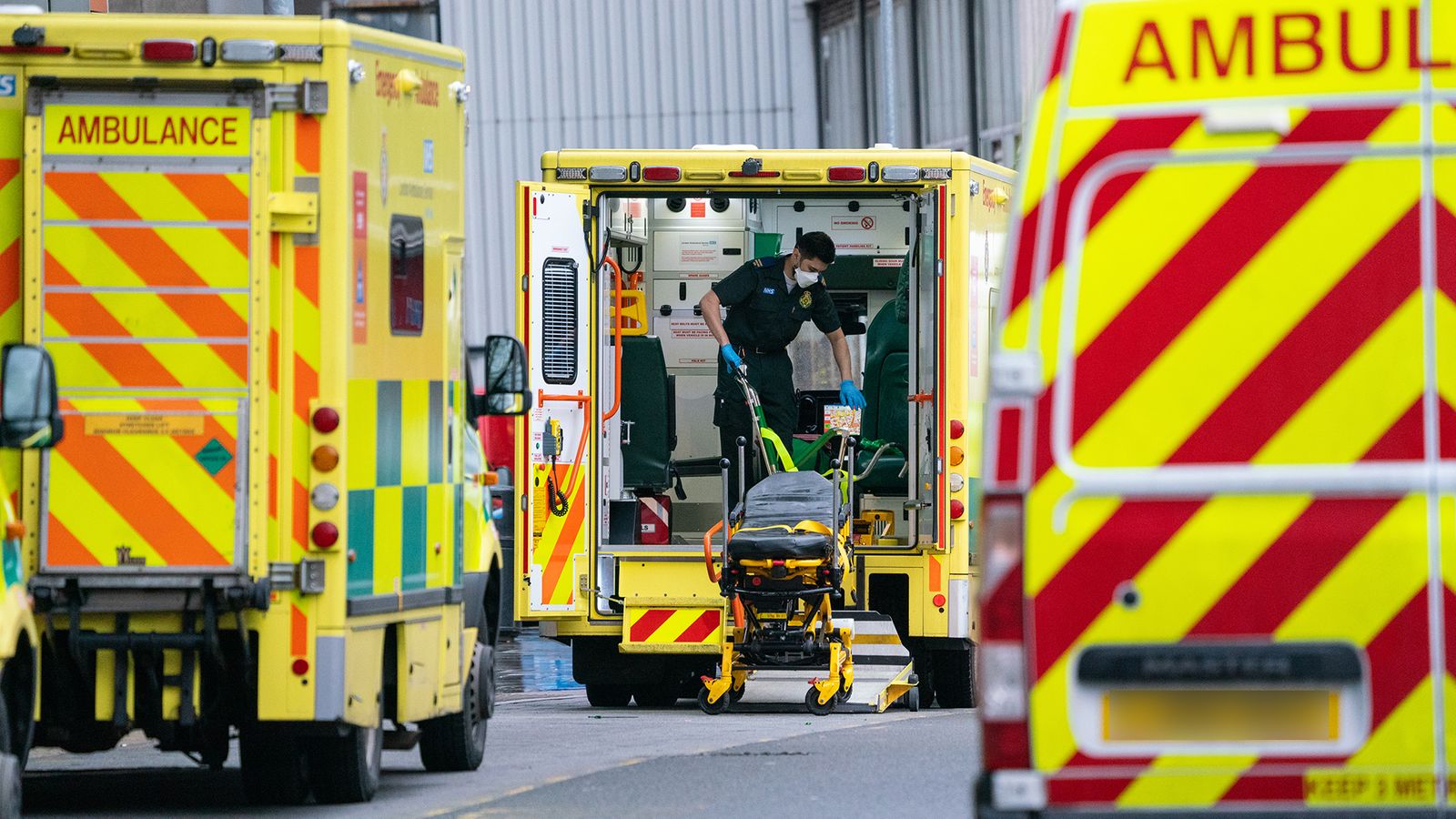South Asian communities in England faced higher levels of COVID-19 infection, severe disease and death during the second wave than any other ethnic minority group, scientists say.
While disparities in hospital admissions and death improved for most ethnic groups between the first (February to September 2020) and the second wave (September to December) of the pandemic, it widened for those from South Asian backgrounds.
The research has been published in the Lancet medical journal and is based on 17 million adults in England, in what is thought to be the largest study to date.
The latest COVID-19 updates from the UK and around the world
Please use Chrome browser for a more accessible video player
Dr Rohini Mathur, of the London School of Hygiene and Tropical Medicine, said: “Despite the improvements seen in most minority ethnic groups in the second wave compared to the first, it’s concerning to see that the disparity widened among South Asian groups.
“This highlights an urgent need to find effective prevention measures that fit with the needs of the UK’s ethnically diverse population.”
Factors such as body weight, blood pressure, underlying conditions and even household size could be some of the key drivers affecting COVID-19 mortality in South Asian communities, the scientists said.
More intensive strategies to help improve outcomes in South Asian communities are being called for by the researchers, as well as help to reduce structural disadvantage and inequality.
Dr Mathur said: “While multigenerational living may increase risk of exposure and transmission (from children or working age adults to older or vulnerable family members), such households and extended communities also offer valuable informal care networks and facilitate engagement with health and community services.
Please use Chrome browser for a more accessible video player
“In light of emerging evidence that minority ethnic groups are less likely to take up the COVID-19 vaccine, co-designing culturally competent and non-stigmatising engagement strategies with these communities is increasingly important.”
The pandemic is thought to have disproportionately affected ethnic minority communities in the UK when compared to white people, with deprivation, working in key roles and having less access to healthcare all putting them at higher risk of infection and death.
Partially anonymised data of 17,288,532 patients on the OpenSAFELY database were studied by researchers in the study.
Ethnicity was self-reported by participants and grouped into five categories – white, South Asian, black, other, and mixed.
Subscribe to the Daily podcast on Apple Podcasts, Google Podcasts, Spotify, Spreaker
In the first wave of infection, data showed that minority groups had a higher chance of testing positive, being admitted to hospital and death when compared white groups.
Admissions to ICU were more than double for all minority groups, except white, according to the researchers, with black people three times more likely to be admitted to the units after taking other factors into account.
All these risks lessened in the second wave for all groups except South Asian.
Dr Daniel Morales, of the University of Dundee, and Dr Sarah Ali, of the Royal Free London NHS Foundation Trust, said that tackling vaccine hesitancy is now the main challenge.
“Unless vaccine hesitancy is tackled head on, differential vaccine uptake may further exacerbate health inequalities faced by minority ethnic groups,” they said.






















